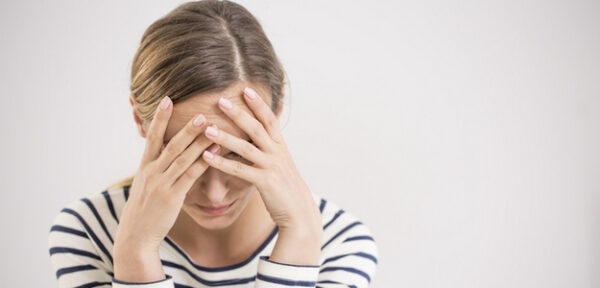
Guilt, which carries with it the motivation to improve behavior in the future, can have a developmental aspect. Shame, on the other hand, is an emotion that is much more unpleasant and harder to bear. Is it possible to get rid of it?
We experience emotions throughout our lives. We begin to feel them in the prenatal period, and from then on, emotions will be with us through good and bad times until we die. However, emotional functioning is not fully developed at birth. It takes several years for the palette of emotions we feel and our ability to control our emotions to mature.
WHAT ARE SELF-AWARENESS EMOTIONS AND HOW DO THEY ARISE?
The first emotions a newborn experiences are relatively uncomplicated and arise in response to simple stimuli. After birth, a person is capable of feeling only two very general emotional states – pleasure and dissatisfaction. After a few more weeks, joy, disgust, sadness, surprise, and fear begin to emerge. However, the matter becomes more complicated in the second year of life when a child begins to experience jealousy (when someone has something we want) and embarrassment (when someone focuses their attention on us in an undesirable way). The class of feelings that includes jealousy and embarrassment are self-awareness emotions, which require the ability to focus on oneself and one’s inner experiences. In order for a child to be jealous of something, they must realize that they do not have something attractive that another child has and that it would be great to have it too. In the second year of life, the palette of emotions becomes even more varied as the child learns what other people expect of them or begins to expect something of themselves. This type of self-awareness emotion is called evaluative emotion. What emotion will a seven-year-old feel when they accidentally spill carrot juice on their mother’s favorite dress? Will they feel ashamed? Or will they feel guilty? Well, the matter is much more complicated because complex emotions, such as shame and guilt, require the presence of other people or at least their image in our mind. This makes us very different from each other in terms of when and how we experience these emotions.
NORMS, RULES, AND GOALS
Michael Lewis, one of the most famous researchers of emotional development, believes that experiencing shame and guilt in children and adults requires knowing what the norms (our own and others), what rules we should follow, and what goals we want to achieve. These are therefore exceptional social emotions. It is important that it is not just a simple awareness of the existence of these standards, rules, and goals.
SOURCE CITATION OR WHO IS RESPONSIBLE FOR WHAT HAPPENED
First, let’s note that the course of interactions with people and social interactions are based on certain scripts that show us how we can/cannot and how we should/should not behave. During socialization, we learn how to behave in a store, at someone’s celebration, and on a romantic date with a stranger. When everything goes according to plan, we are usually accompanied by positive emotions. We feel that everything is as it should be. Sometimes, however, the situation goes wrong: the rule as well as our target expectations are not met. He wants to shake our hand and we kiss him, and in the end, he turned red and looked as if he had collapsed to the ground. The first step towards feeling shame or guilt is to assess whether we are responsible for what happened. It is not surprising, therefore, that shame is a much more unpleasant emotion and more difficult to bear when the guilt that has a motivation to improve behavior in the future can even have a developmental aspect. When analyzing various situations that can cause shame or guilt in someone or ourselves, it is important to keep in mind that the interpretation of events as such, for which we are responsible, leads to the violation of rules or expectations that are the result of our permanent impairment or behavior of an individual, are only a product of our mental activity.
WHY ARE WE SO DIFFERENT FROM EACH OTHER IN VULNERABILITY TO SHAME AND GUILT
People differ significantly in their tendencies to use global or detailed attributes and thus experience shame or guilt in situations of failure, lack or error. Unlike disgust, which arises in response to certain stimuli (odor or taste), shame and guilt are very private and individual emotions. To paraphrase the British proverb “Beauty is in the eye of the beholder”, it can be said that shame and guilt are a matter of interpretation. It is no coincidence that perfectionists with extremely high standards that are difficult to implement and also have a strong tendency to self-criticism feel shame more often than others. Marcia Webb, a clinical psychologist at Seattle Pacific University, and her colleagues showed in their study that people who usually use global attribution in a situation of failure also suffer from depression more often.
